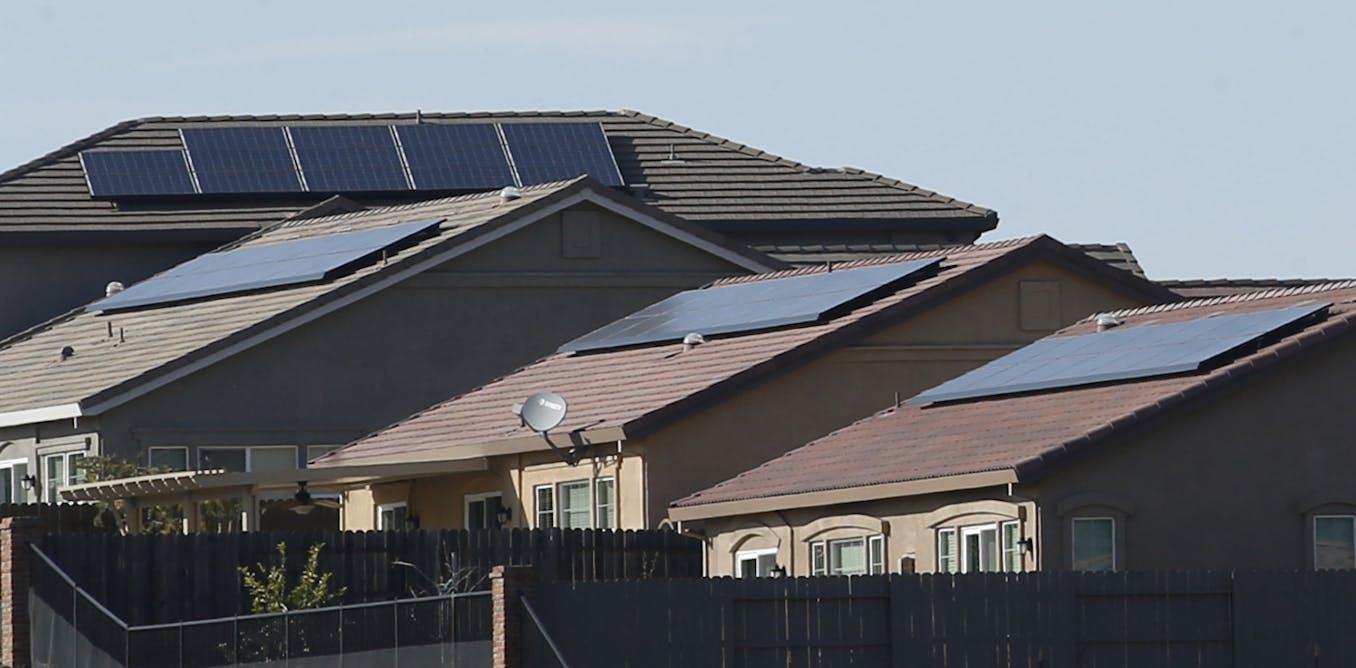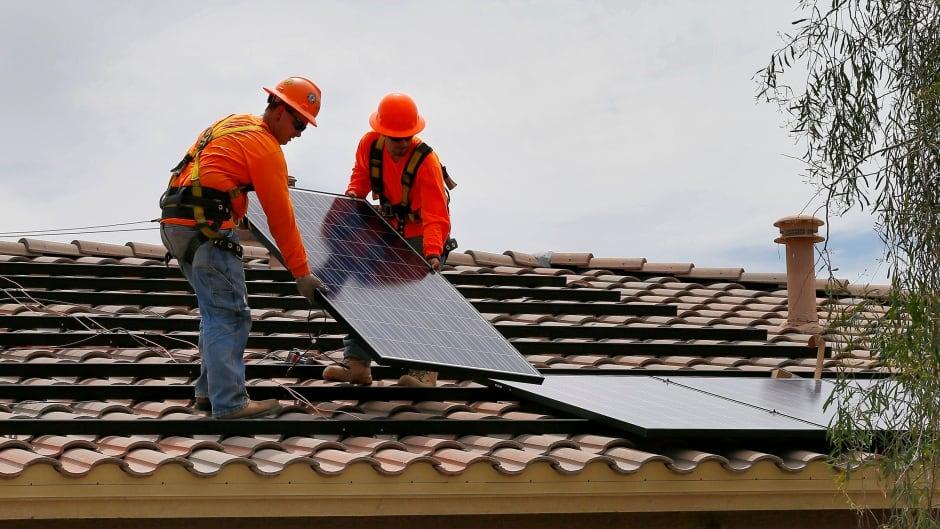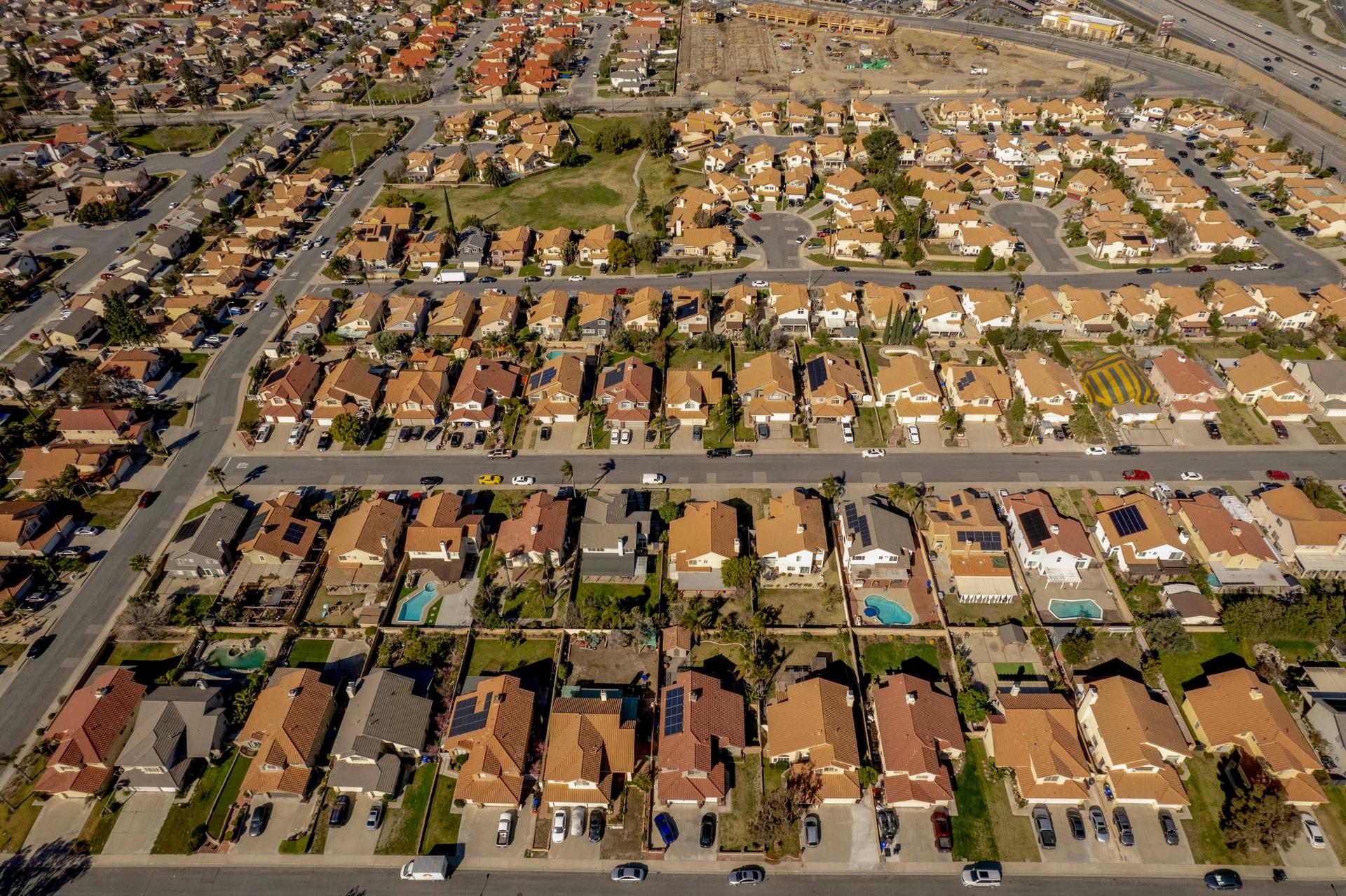California implemented a solar mandate for new homes in 2020. The law requires all new single-family and multi-family homes up to three stories to include solar panels.
This mandate aims to help California reach 50% renewable electricity by 2030. Will this green initiative create a financial burden for homeowners?
$100,000 Bill: Can Homeowners Bear the Cost?

Finance expert John Williams warns of potential $100,000 costs for homeowners. This estimate covers solar panels, electric appliances, and other upgrades.
The average California home price is $816,804 in 2023. Can middle-class families afford this additional expense?
Renewable Goals: At What Price for Residents?

California targets 60% renewable electricity within five years. Energy costs may rise to meet this ambitious goal.
The state’s electricity rates are already 80% higher than the national average. Will the pursuit of green energy bankrupt ordinary citizens?
Corporate Alignment: Big Tech’s Role in Change?

Major corporations like PG&E, Salesforce, and Amazon support California’s electrification goals. These companies wield significant influence in the state.
California’s tech industry contributes 18.5% to the state’s GDP. Are corporate interests overshadowing homeowners’ concerns?
Bay Area Retrofit: A $73,000 Minimum Spend?

Retrofitting a single-family home in the Bay Area could cost $73,000. This figure likely underestimates current costs due to inflation.
The Bay Area’s median home price is $1.2 million. How will this additional cost impact the already expensive housing market?
Multi-Family Properties: Landlords’ Looming Crisis?

Landlords face a potential financial disaster with these mandates. Rising insurance costs and property taxes compound the issue.
California has 3 million rental properties. Could this lead to a mass exodus of small landlords?
Wealth Transfer: Who Benefits from Homeowners’ Pain?

Williams suggests a significant wealth transfer may occur. Unable to afford upgrades, some homeowners might sell at a loss.
The top 1% of Californians hold 23.7% of the state’s wealth. Are these mandates inadvertently widening the wealth gap?
Affordable Housing: Dream or Distant Memory?

California already faces an affordable housing crisis. The median home price is 2.5 times the national average.
These energy mandates could further reduce affordability. Will homeownership become a luxury only for the wealthy?
Environmental Benefits: Worth the Economic Cost?

California aims to reduce greenhouse gas emissions by 40% below 1990 levels by 2030. The state has cut emissions by 14% since 2004.
These mandates could significantly accelerate progress. But at what cost to individual homeowners and the economy?
Future of California Housing: What Lies Ahead?

The impact of these mandates will reshape California’s housing landscape. It could accelerate gentrification in some areas.
The state needs 180,000 new homes annually to meet demand. Will these energy requirements hinder or help this goal?


